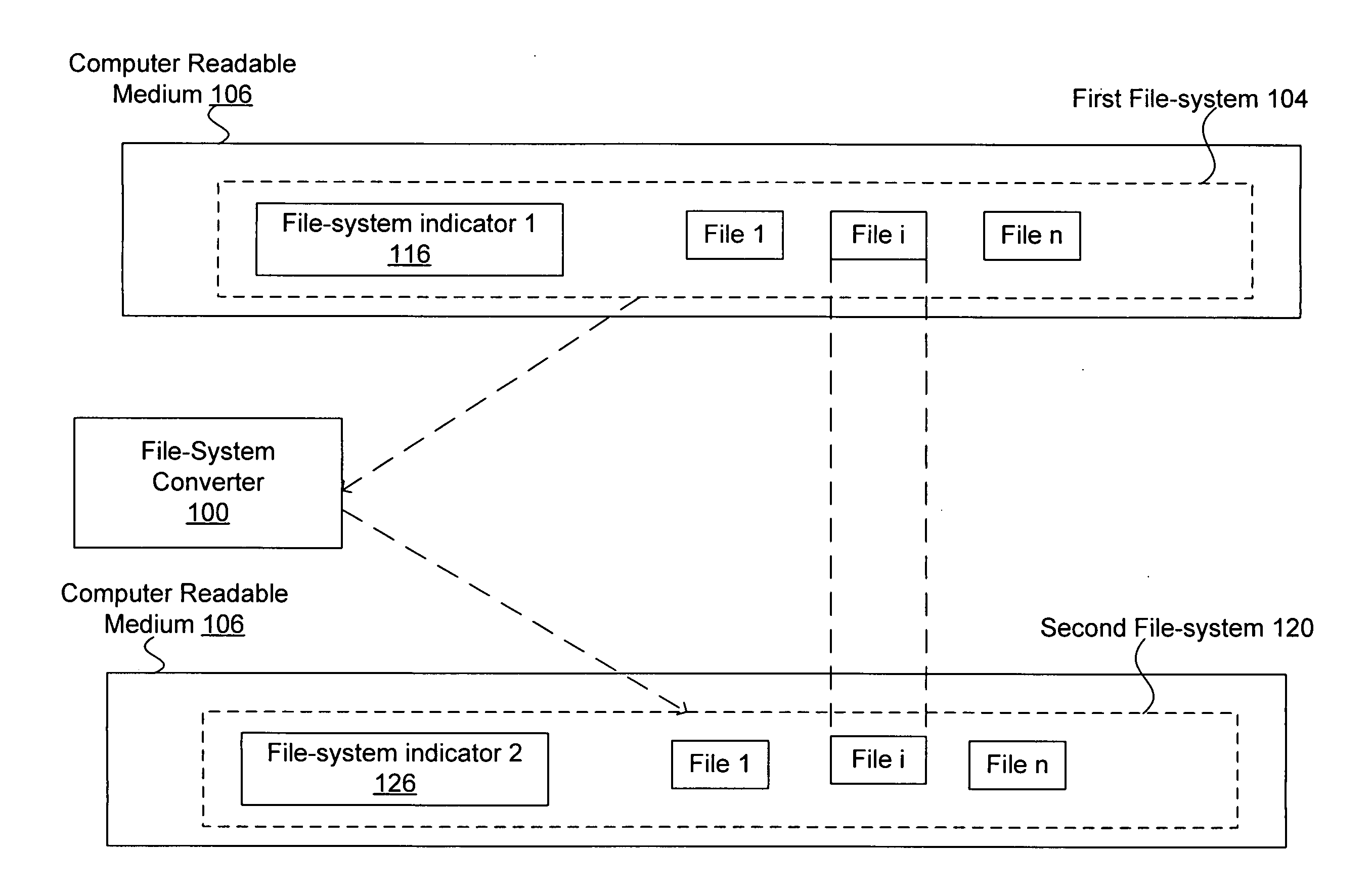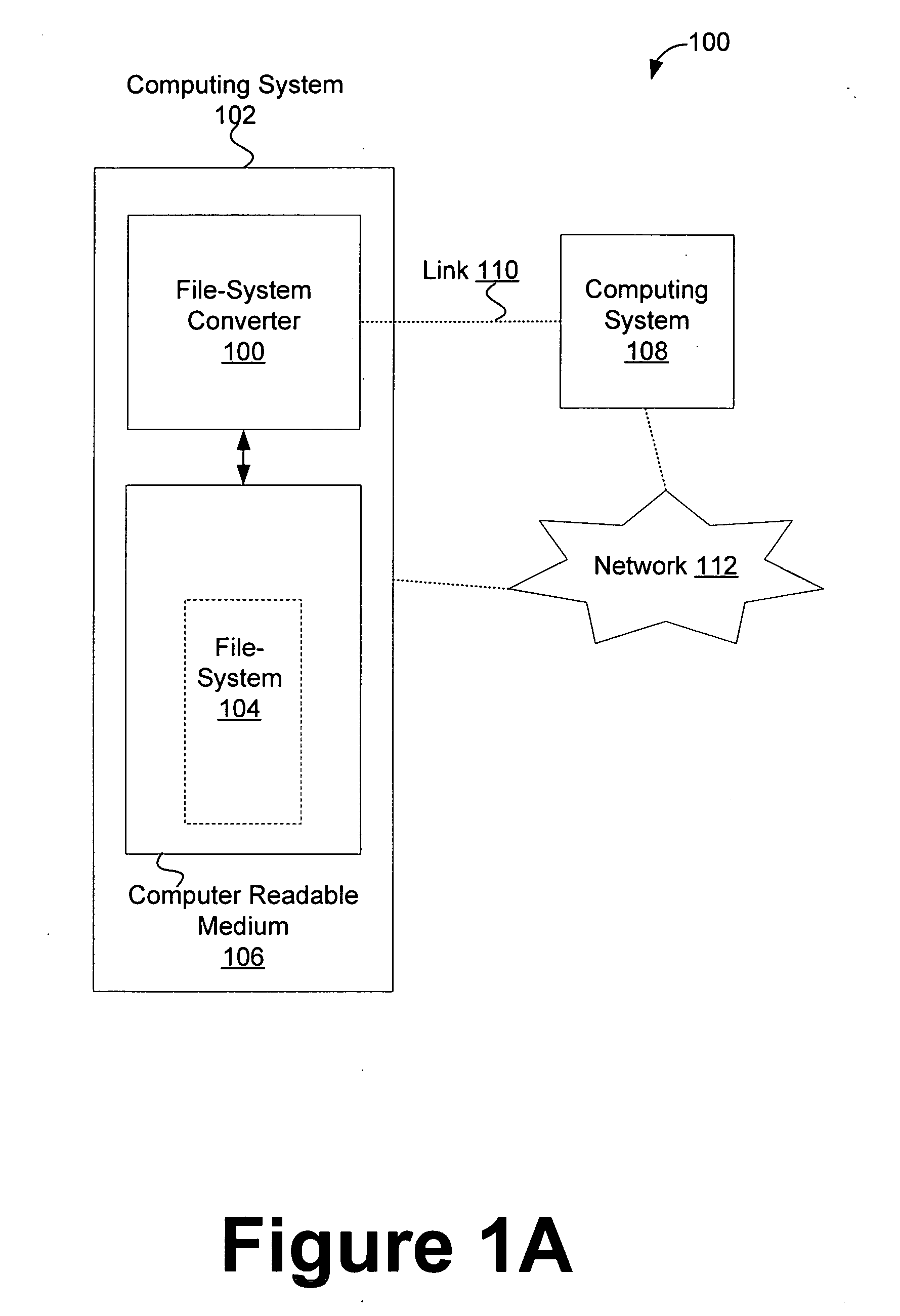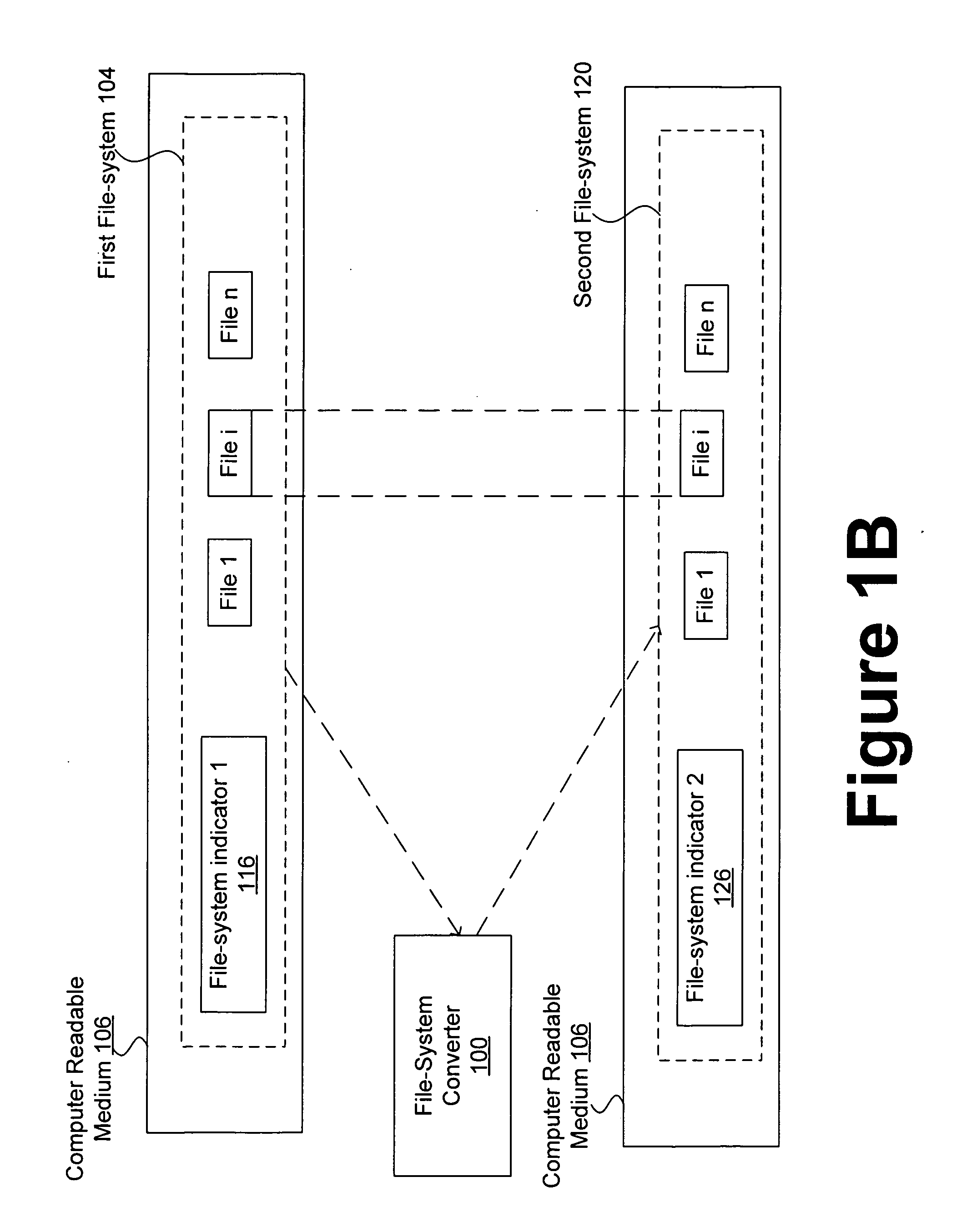Converting file-systems that organize and store data for computing systems
a technology of computing system and file system, applied in the field of converting file system that organizes and stores data for computing system, can solve the problem of inefficient cost of clustering
- Summary
- Abstract
- Description
- Claims
- Application Information
AI Technical Summary
Benefits of technology
Problems solved by technology
Method used
Image
Examples
Embodiment Construction
[0021] As noted in the background of the invention, it is possible to reformat a computer readable medium that has been originally formatted for a particular file-system to effectively use another file-system. The reformatting process deletes the original file-system and any files it stores. Hence, before reformatting the computer readable medium, any files already stored on the computer readable medium can be temporarily stored and subsequently stored back on the computer readable medium after it has been successfully reformatted. As such, the conventional reformatting process typically requires a significant amount of temporary storage, processing power, and time for reading and writing the files back on the computer readable medium. Further, the same file can be rewritten to different location on the computer readable medium (i.e., moved) as the result of the conventional reformatting techniques. These effects and / or resources required for conventional reformatting may not be alw...
PUM
 Login to View More
Login to View More Abstract
Description
Claims
Application Information
 Login to View More
Login to View More - R&D
- Intellectual Property
- Life Sciences
- Materials
- Tech Scout
- Unparalleled Data Quality
- Higher Quality Content
- 60% Fewer Hallucinations
Browse by: Latest US Patents, China's latest patents, Technical Efficacy Thesaurus, Application Domain, Technology Topic, Popular Technical Reports.
© 2025 PatSnap. All rights reserved.Legal|Privacy policy|Modern Slavery Act Transparency Statement|Sitemap|About US| Contact US: help@patsnap.com



